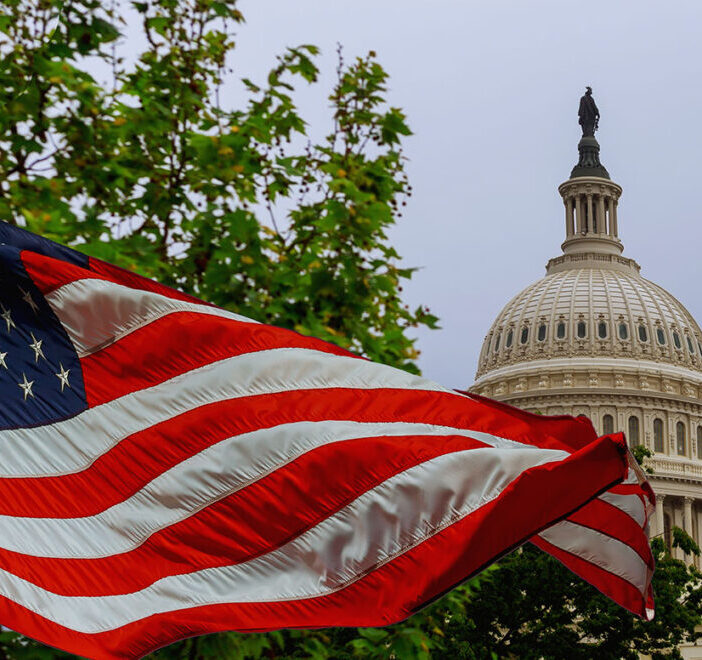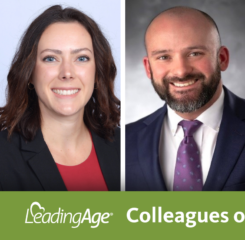HUD Home Modification Grants Open Until October 13
On August 29, HUD announced the competition for the latest round of grants for the Older Adult Home Modification Program (OAHMP). HUD has $15 million in OAHMP grants to distribute to eligible entities, including nonprofit organizations. The grants will fund “comprehensive programs” that make safety and functional home modification repairs and renovations to meet the needs of low income older adult homeowners (62+).
In addition to nonprofits, other eligible entities public housing agencies, and state and local governments. Entities that received OAHMP grant funding under the program’s fiscal year 2021 NOFO, are not eligible to apply under this program.
The goal of the home modification program is to enable low income older adult homeowners to remain in their homes through “low cost, low barrier, high impact home modifications” to reduce older adults’ risk of falling, improve general safety, increase accessibility, and to improve their functional abilities in their home. “This will enable older adults to remain in their homes, that is, to “age in place,” rather than move to nursing homes or other assisted care facilities,” HUD’s Notice of Funding Opportunity says.
“By 2040, it is estimated that 20 percent of the population will be over 65 years old,” HUD Secretary Marcia Fudge said when announcing the opening of the OAHMP grant application window. “We must allow our nation’s seniors to age-in-place with dignity. This funding will give seniors the flexibility to make changes to their existing homes -changes that will keep them safe and allow them to gracefully adjust to their changing lifestyle. This program is crucial to our work to increase and maintain our nation’s housing supply, and it aligns with the Biden-Harris Administration’s efforts to treat every person in this country with dignity and respect.”
In the NOFO, HUD reviews components of strong applications.
First, the NOFO highlights research-backed approaches to home modifications. Here, the NOFO describes research on the benefits of “high intensity” falls prevention assessments for adults aged 65 and older with one or more of the following risk factors: one or more falls in the previous year, a recent hospital admission, a chronic health condition, or visual impairment. The NOFO also reviews research of the CAPABLE model begun by the Johns Hopkins University School of Nursing. In CAPABLE, the program’s use of an occupational therapist, a registered nurse, and a home modifier / handy person resulted in a significant reduction in disability compared to the control group based on improvements in an ADL and/or IADL scoring tool.
Second, the NOFO emphasized home modifications, such as the installation of grab bars, railings, and lever-handled doorknobs and faucets, as well as the installation of adaptive equipment, such as temporary ramp, tub/shower transfer bench, handheld shower head, raised toilet seat, risers for chairs and sofas, and non-slip strips for tub/shower or stairs, as preferable to modifications that are more repair or rehabilitation in nature because these could result substantial delays. “Because of the vulnerable nature of the persons served, awardees of an OAHMP grant are highly encouraged to ensure that the processes employed to qualify projects for home modifications avoid the potential for project implementation delays,” the NOFO says.
Services made available under this NOFO must be for the benefit of eligible low-income homeowners who are at least 62 years old for work in their privately owned primary residence. LeadingAge has urged Congress to expand eligibility to rental units that serve older adults as 22% (and increasing) of older adults rent their homes. LeadingAge is pleased that the Senate’s FY23 HUD funding bill would expand the program to include older adult renters.
Under OAHMP, allowable modifications are defined as low cost changes to the home environment that are directly related to reducing the risk of falling and improving general safety, accessibility, and functional abilities of the client. The resulting home environment is expected to make tasks easier, reduce accidents, and lengthen the amount of time the client can continue to live in their primary residence.
Per the NOFO, the cost of home modifications per housing unit (inclusive of labor, contractor services, materials and supplies associated with structural modifications and adaptive equipment) is capped at $5,000. This capped amount excludes the salary for the Occupational Therapist (OT), licensed OT Assistant, or Certified Aging-in-Place Specialist.
The NOFO includes a list of home modifications, not all of which grantees must offer. Under “kitchens,” this list includes examples of OAHMP “Maintenance Repair Activities” (replacing cabinet hardware, such as replacing round knobs with D-shaped handles; removing or replacing interior of existing cabinetry for easier access (e.g., pull-out drawers and shelves); replacing faucets with lever-, touch-, or sensor-style faucet; install easy-to-use ABC-rated fire extinguisher in an easy-to reach place; installing automatic stove turnoff devices) and examples of “Renovation Activities” (complete or substantial kitchen remodel; install lower work surface that can be used while seated; lowering of cabinets).
Of the total $15 million available, at least $5 million must meet the needs of communities with substantial rural populations. Grants will range in size from $1.25 million to $500,000.
The application deadline is October 13, 2022.
View the NOFO here.

Most Recommended
November 08, 2024
 HOTMA: New Rules for Housing
HOTMA: New Rules for Housing
November 06, 2024
 Colleagues on the Move, November 6, 2024
Colleagues on the Move, November 6, 2024
November 06, 2024
 Analysis: What Does the Final CY2025 Home Health Rule Include?
Analysis: What Does the Final CY2025 Home Health Rule Include?
October 29, 2024
Katie Smith Sloan Urges Members to Build a Movement, Take Action
Recently Added
December 04, 2024
Second OIG Infection Preventionist Compliance Report Released
December 04, 2024
 Colleagues on the Move, December 4, 2024
Colleagues on the Move, December 4, 2024
November 27, 2024



